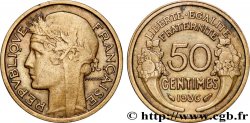fme_916602 - III REPUBLIC Plaque, Sadi Carnot
250.00 €(Approx. 282.50$ | 212.50£)
Quantity
Add to your cart

Type : Plaque, Sadi Carnot
Date: n.d.
Metal : bronze
Diameter : 219 mm
Orientation dies : 12 h.
Weight : 877,07 g.
Edge : lisse
Puncheon : sans poinçon
Coments on the condition:
Trou percé à 12 heures. Patine sombre hétérogène, presque noire, présentant quelques points d’usure
Obverse
Obverse legend : ANÉPIGRAPHE.
Obverse description : Buste habillé de Sadi Carnot à gauche.
Reverse
Reverse legend : INCUS.
Commentary
Attention ! En fonction du lieu d’expédition, cette médaille peut donner lieu à des frais de port supplémentaires.
Be aware that in function of the shipping place, this medal may rise the shipping fees..
Sadi Carnot, né le 11 août 1837 à Limoges et mort le 25 juin 1894 à Lyon (3e arrondissement), de son nom complet Marie François Sadi Carnot, est un homme d'État français. Il fut président de la République du 3 décembre 1887 jusqu'à ce qu'il meure assassiné le 25 juin 1894.
Haut fonctionnaire de carrière, Sadi Carnot, avant de se faire élire à l'Élysée, avait assumé de nombreuses charges politiques et gouvernementales : député de la Côte-d'Or, préfet de la Seine-Inférieure, puis sous-secrétaire d'État aux Travaux, il fut nommé ministre des Travaux publics, puis des Finances.
Dans un contexte d'agitation syndicale et anarchiste, les lois restreignant les libertés individuelles et la presse venaient d'être votées, Sadi Carnot est l'une des cibles du mouvement anarchiste ayant refusé la grâce de Ravachol, d'Auguste Vaillant, auteur de l'attentat à la Chambre des députés et d'Émile Henry. Il est blessé d'un coup de poignard par l'anarchiste italien Sante Geronimo Caserio le 24 juin 1894, alors qu'il quittait, par une issue secondaire pour éviter la foule, un banquet organisé à la Chambre de commerce à l'occasion de l'exposition universelle, internationale et coloniale à Lyon. Le député Gaston Doumergue, futur président de la République, est témoin de la scène. Caserio est guillotiné le 16 août suivant pour le crime.
Le président de la République meurt des suites de ses blessures, peu après minuit, le 25 juin 1894.
Son assassinat fait adopter par la Chambre la dernière et la plus marquante des lois scélérates visant les anarchistes et leur interdisant tout type de communication. Elle a été abrogée en 1992. Il repose au Panthéon de Paris avec son grand-père Lazare Carnot.
Be aware that in function of the shipping place, this medal may rise the shipping fees..
Sadi Carnot, né le 11 août 1837 à Limoges et mort le 25 juin 1894 à Lyon (3e arrondissement), de son nom complet Marie François Sadi Carnot, est un homme d'État français. Il fut président de la République du 3 décembre 1887 jusqu'à ce qu'il meure assassiné le 25 juin 1894.
Haut fonctionnaire de carrière, Sadi Carnot, avant de se faire élire à l'Élysée, avait assumé de nombreuses charges politiques et gouvernementales : député de la Côte-d'Or, préfet de la Seine-Inférieure, puis sous-secrétaire d'État aux Travaux, il fut nommé ministre des Travaux publics, puis des Finances.
Dans un contexte d'agitation syndicale et anarchiste, les lois restreignant les libertés individuelles et la presse venaient d'être votées, Sadi Carnot est l'une des cibles du mouvement anarchiste ayant refusé la grâce de Ravachol, d'Auguste Vaillant, auteur de l'attentat à la Chambre des députés et d'Émile Henry. Il est blessé d'un coup de poignard par l'anarchiste italien Sante Geronimo Caserio le 24 juin 1894, alors qu'il quittait, par une issue secondaire pour éviter la foule, un banquet organisé à la Chambre de commerce à l'occasion de l'exposition universelle, internationale et coloniale à Lyon. Le député Gaston Doumergue, futur président de la République, est témoin de la scène. Caserio est guillotiné le 16 août suivant pour le crime.
Le président de la République meurt des suites de ses blessures, peu après minuit, le 25 juin 1894.
Son assassinat fait adopter par la Chambre la dernière et la plus marquante des lois scélérates visant les anarchistes et leur interdisant tout type de communication. Elle a été abrogée en 1992. Il repose au Panthéon de Paris avec son grand-père Lazare Carnot.








 Report a mistake
Report a mistake Print the page
Print the page Share my selection
Share my selection Ask a question
Ask a question Consign / sell
Consign / sell
 Full data
Full data












